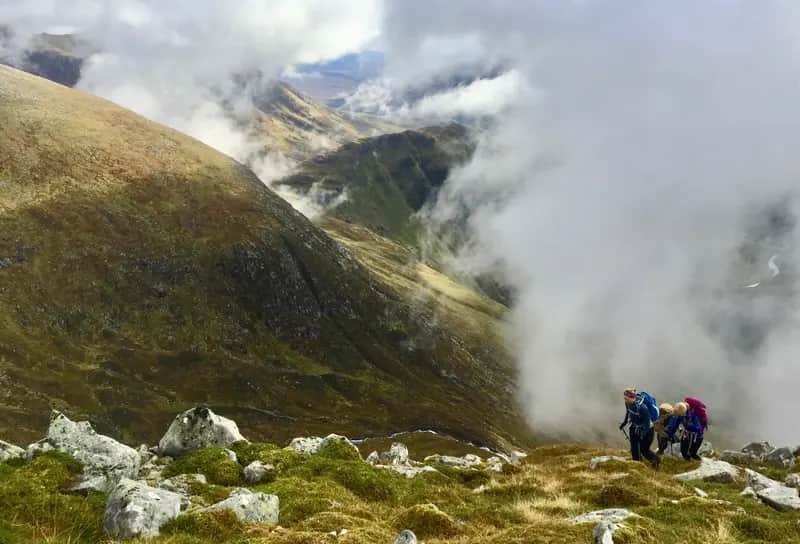CRAMPONS, SPIKES AND SNOW SHOES, THE OPTIONS FOR WINTER CONDITIONS

SNOWBOUND: The view from the summit of Ben Vrackie last weekend - lots of walkers and a variety of footwear

FROZEN OUTLOOK: At the lochan
THE big melt of the last few days has brought a spring-like feel to the hills but don't be fooled: Winter hasn't done with us yet.
A big front is moving in from the east, bringing a return to much colder temperatures and the high probability of more snow to reinforce the remaining cover. We could still be seeing winter conditions late in March.
The difference since the weekend is striking. On Sunday, we were ploughing through deep snow to reach the summit of Ben Vrackie. Yesterday, a friend was bemoaning the fact that they had climbed a hill in slush and soft mud, crampons just a dead weight in their bags.
Still, it would be inadvisable to make any ascent at this time of year without them. It is often during spells of sparse snow cover when they are most needed.
You can look at bare slopes from the relatively balmy climes of the car park, but it's impossible to know what's just over the brow. And when there is deep snow on the hill, it can be the lower approach routes that prove more treacherous with sheet ice and refrozen snow.
We did wonder on Sunday whether crampons would be needed on Ben Vrackie. It was soft and muddy going through the trees, but as soon as we reached open ground we encountered long stretches of snow that had melted and then solidified again. It was passable with care all the way to the frozen loch, but just beyond this point, where the stepped path starts its steeper rise, we fitted our crampons.
We could have carried on without, but it just made life easier. Now we could stick to the line of the path and not have to dodge off to the sides every second step to avoid the worst of the ice. Besides, it's always sensible to fit them before it becomes a necessity.
Higher up, there's no doubt there were often more of a hindrance at times. The inconsistency of the snow cover meant they were balling up regularly and had to be continually kicked clear before we hit more solid patches of ground.
I had the same problem recently coming off Cairn Gorm, an awkward, stumbling descent but I couldn't have done without them. Besides, if we had been switching between fitting and removing them every time the conditions merited it, we would have been there all day. It's just not practical.
The hill was busy and it was interesting to see how many folk had decided not to use crampons. Some made good progress, then they would slip and the pace would slow.
Others went off route, searching for softer terrain. On a few occasions they were all too successful, plunging thigh or waist-deep into the white. One walker was unable to extricate his leg from a deep hole and two companions had to help dig him out.
It was clear to see that many thought it too much of a hassle to stop and fit crampons. They would only be needed for a short time so they were happy to take their chances.
On a relatively simple hill like Ben Vrackie the odds are that will be fine. But apply that line of thinking to some other peaks and it could lead to serious trouble.
There's always a moment when you feel you may need crampons, when you can't kick a step, when the route ahead looks like trouble. That's the point when there should be no hesitation. They may not be needed for long but why take the risk?
We've all heard the horror stories about accidents occurring simply because certain parties delayed their decision: One more step will be okay, and then that one step proves disastrous.
The last few years have seen increased use of spikes for the use on lower slopes and approaches. The quality has improved immensely, but I would still advocate having crampons for the higher ground. Snow shoes are also becoming used more widely. Sometimes it feels as though we have been invaded by the Inuit.
It seems that every year there's more and more equipment to buy, more to add to the weight of the pack. The ideal scenario would be to have spikes for the approach, crampons for higher, steeper slopes and then snow shoes for the crossing of plateaux under deep snow.
And don't forget the survival shelter, avalanche beacon and probing poles. Just remember to pack a pack mule and a spare set of knee-caps as well.

